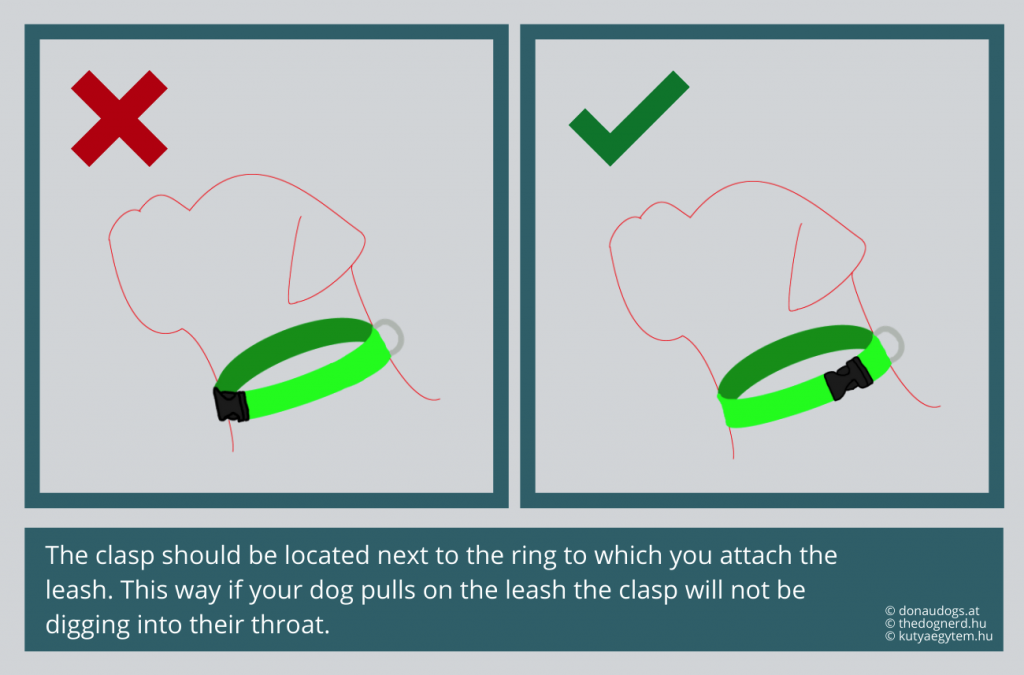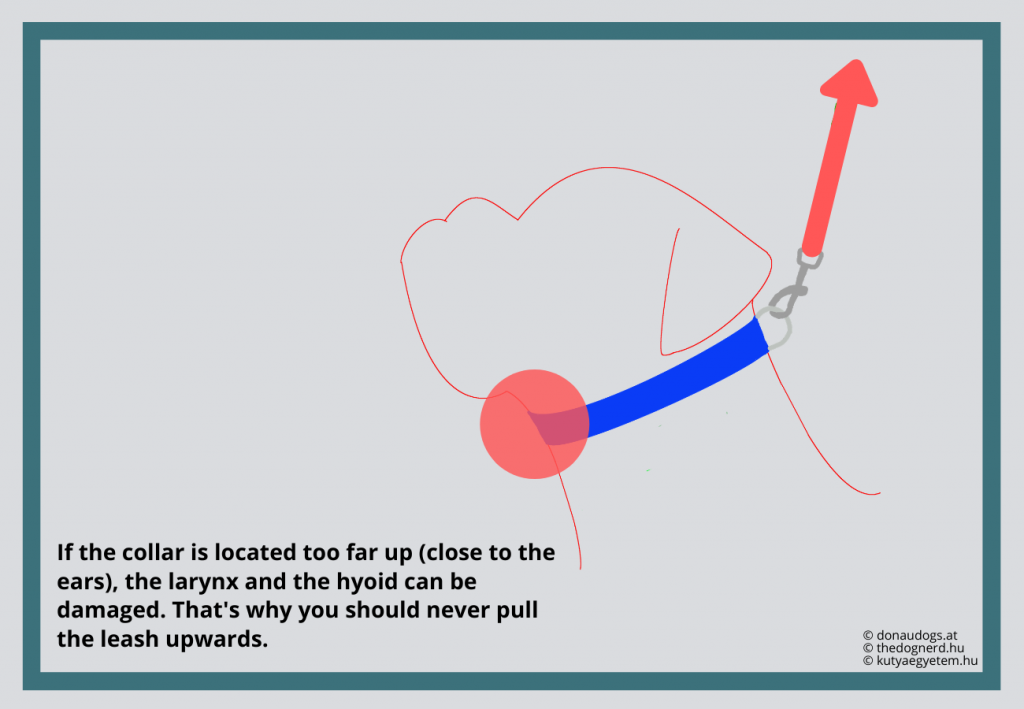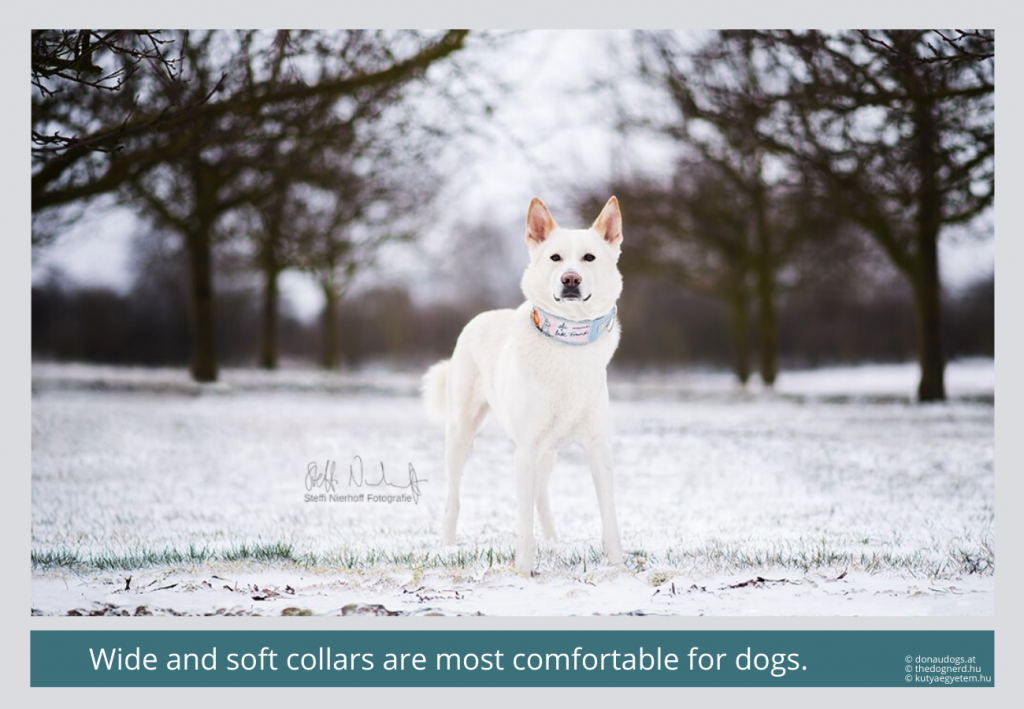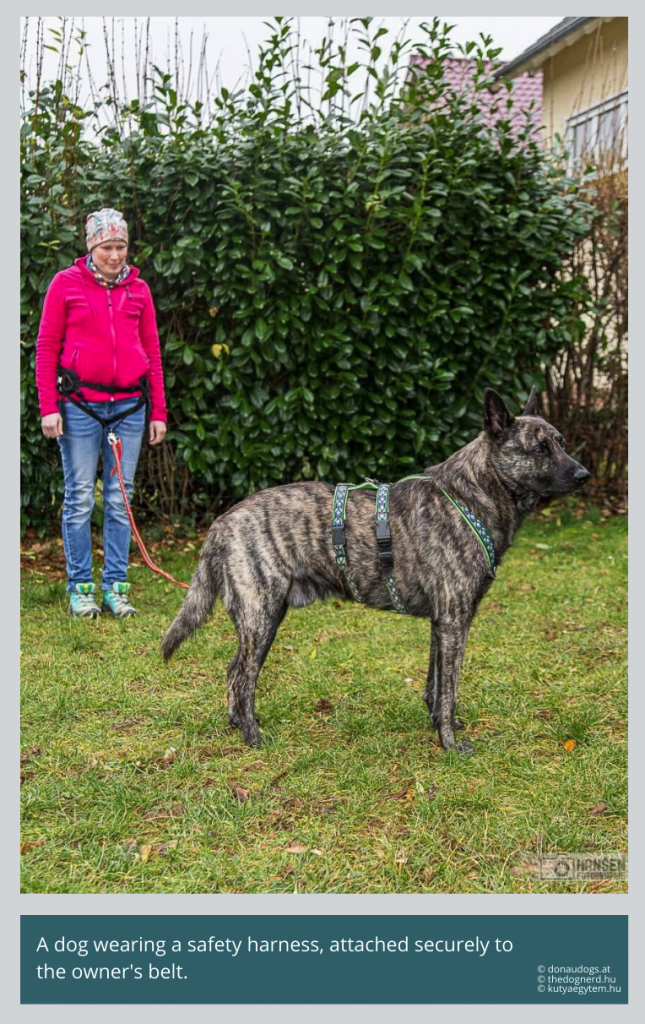Intro
If you want to get two dog trainers to fight, you should ask them if your dog should be wearing a collar or a harness, or if you should “barf” them [Bones And Raw Food]. We are not going to tell you what to do, instead we explain what kinds of collars are out there and when they are good.
Materials and make
Collars are usually made of nylon, leather or textiles, and most will have metal or plastic clasps. The clasp should be located next to the ring to which you attach the leash 1.
Just like with leashes, the choice of material is a matter of taste. The broader a collar, the better – in case your dog suddenly pulls, the force will be distributed over a larger surface.
The collar should be:
- tight enough not to slip off the dog’s head
- but still as loose as possible
- placed far from the section where the cervical spine meets the skull
Moreover, make sure that no hair is caught in the clasp and that the tag with your phone number is securely fixed and you’re ready to go.
When are they appropriate?
The main advantage of collars is that they allow maximum freedom of movement (especially in the shoulder and chest area). It’s also easier to put them on than a harness. At the same time if the dog is pulling a lot, they can increase the pressure within the eye and lead to damage in the tracheal area, not to mention that the constant pressure makes breathing kind of hard.2. If the collar is located too far up (close to the ears), the larynx and the hyoid can be damaged. That’s why you should never pull the leash upwards.
New research has found if a dog pulls, “there is no such thing as a good collar”, that is a collar that cannot lead to injury.
At the same time, a collar can be the best choice for you:
-
- if you’re walking your dog off-leash
- if their body type is unusual and you can’t find a good harness model for them
- if your dog had bad experiences and hates wearing the harness, just use a collar while you work on your harness training
Basically, if the dog is a pro at loose leash walking, it doesn’t really make a difference if you use a harness or a collar.3 For example, I walk my dog in the city only with a harness, but when we go to the forest by car, we swap it for a collar.
Collars to avoid
Now, there is also a wide variety of collars that are supposed to “teach” dogs stuff, like stop your dog being reactive, barking, pulling… You can read more about them in our post about aversive equipment, for now just remember this rule: if the producer promises that the collar will do wonders (a.k.a. replace training), it is aversive. The most frequently encountered aversive collars are:
-
- e-collars
- ultrasonic collars
- choke collars
- prong collars
A note on chain collars
We are not discussing chain collars here because they’re not for recreational use. They are mandatory during dog shows so that the judges can see that the handler is definitely not using a prong collar4. Broad, soft collars described in this post are much more appropriate for everyday use.
Don’t miss any new posts, follow The Dog Nerd on facebook!
Check out my other equipment posts
How to choose the perfect harness for your dog
How to choose the perfect leash for you and your dog
How to choose the perfect muzzle for your dog
Help, my dog pulls on the leash!
These posts were created in collaboration with Donau Dogs.
*The photo used for the facebook cover of this blog post was taken by Ira Vaculik, thank you!




